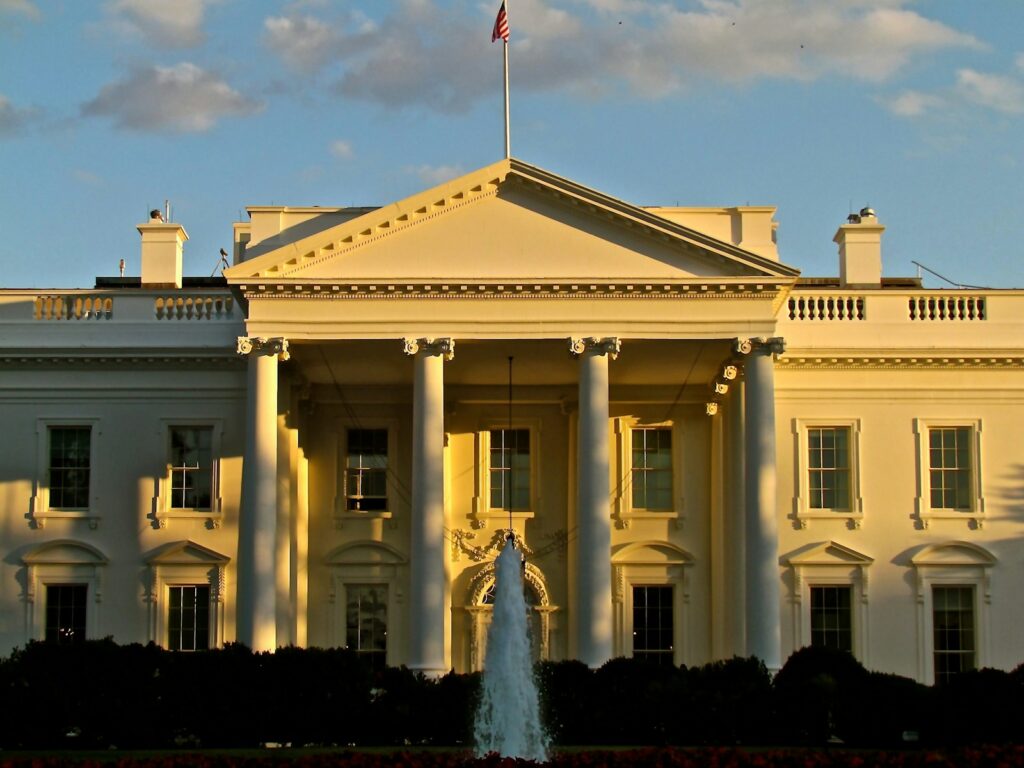
The conclusion of a United States presidency signifies more than a mere transfer of power; it initiates a distinct and redefined phase for the former commander-in-chief. Although the prominence of the Oval Office recedes, the duties and expectations assigned to these individuals continue to shape their lives in significant ways. Rather than withdrawing into obscurity, former presidents remain influential figures operating within a well-established framework of rules and benefits that support their ongoing contributions to the nation.
This complex post-presidential structure, largely formalized by the landmark Former Presidents Act of 1958, guarantees that those who have held the highest office receive guidance, resources, and security provisions. These measures empower them to manage their continuing public roles effectively, safeguard their historical legacies, and maintain engagement in both domestic and international affairs. The system delicately balances the transition back to private life with the reality that a former president’s influence and access to sensitive information persist.
Comprehending these extensive regulations is essential to understanding the unique status of former US presidents. They are not simply retired public officials but enduring symbols of American leadership, governed by specific protocols concerning their personal travel, security, and the handling of classified intelligence. The following discussion will highlight key provisions that shape the lives of these distinguished individuals long after their terms conclude.

Constitutional Limits on Presidential Terms: The Two-Term Rule and Its Implications
A fundamental and defining principle for former US presidents is the constitutional prohibition against seeking the presidency after serving two terms. This restriction arose from the unprecedented tenure of Franklin D. Roosevelt, who was elected to a fourth term, breaking historical tradition. Roosevelt’s extended presidency prompted significant concern among lawmakers about the potential risks of prolonged leadership on American democratic principles. Prior to Roosevelt, no president among the 31 predecessors had served more than two terms, making his tenure a critical catalyst for constitutional reform.
In response, the 22nd Amendment to the United States Constitution was ratified in 1951, formally limiting presidents to two terms. This safeguard prevents any individual from accumulating excessive power or influence over an extended period. Consequently, well-known figures such as Bill Clinton, George W. Bush, and Barack Obama, each having served two full terms, are constitutionally barred from pursuing a third term. The amendment includes an important exception: a vice president who assumes the presidency and serves fewer than two years of the predecessor’s term may still be elected to two full terms. Conversely, former presidents who have completed only a single term, such as Donald Trump, retain the constitutional right to seek election again. This clear limitation reinforces the nation’s dedication to leadership rotation and democratic governance

Security Protocols Prohibit Former Presidents from Driving on Public Roads
While the freedom to drive on public roads is a routine privilege for most citizens, it remains inaccessible to former US presidents due to stringent security measures. Following the assassination of President John F. Kennedy in 1963, security protocols for both sitting and former presidents were significantly tightened. The last president known to have driven personally on public roads was Lyndon B. Johnson, after which the practice was completely discontinued for safety reasons. The ongoing symbolic significance of former presidents and their potential as targets makes their personal security a paramount concern.
As a result, even many years after leaving office, former presidents depend entirely on trained professionals for transportation. In a 2017 interview, former President George W. Bush acknowledged that he had not driven on public roads in 25 years, restricting his driving to private ranch roads. Whenever travel is required—whether for official events or personal matters—former presidents are always chauffeured by their Secret Service agents. These agents are extensively trained in defensive and evasive driving techniques to ensure the highest level of protection under all circumstances. This continuous vigilance makes private driving impossible.
Presidential historian William S. Bike observes that former President Bill Clinton, for example, often misses driving and prefers to operate a golf cart during rounds of golf, reflecting how deeply this restriction affects their daily lives. Anecdotes from earlier presidencies, such as Harry S. Truman assisting a farmer in herding pigs while driving, illustrate the dramatic shift in presidential security measures over time.

Mandated Travel and Support for Former Presidents’ Diplomatic Engagements
Although certain personal freedoms are restricted, former presidents receive substantial support to fulfill a vital ongoing role: representing the United States through continued diplomatic engagement. The enactment of the Former Presidents Act of 1958 marked a significant recognition of their lasting value by providing several key benefits, including a generous travel allowance. This provision is specifically intended to facilitate their participation in both domestic and international diplomatic activities. The nation acknowledges that their experience, connections, and prestige remain important assets.
Under this travel stipend, a former president may receive up to one million dollars annually to reimburse travel expenses. This allocation covers costs not only for the former president but also for two accompanying staff members, ensuring adequate support for their official duties. Additionally, spouses of former presidents are entitled to up to $500,000 per year to cover travel and any necessary security arrangements. Beyond financial support, former presidents are granted diplomatic passports, which simplify international travel by allowing them to bypass the often cumbersome visa application process. This comprehensive assistance reflects the expectation that former presidents will maintain active roles in public affairs, contributing their unique perspectives and influence to national and global issues.

Presidential Libraries: Preserving Legacy and Promoting Transparency
Preserving the historical record and legacy of a presidency is a fundamental aspect of American governance, with former presidents playing a direct role through the establishment of their presidential libraries. In 1955, several years prior to the enactment of the broader Former Presidents Act, Congress passed the Presidential Libraries Act, creating a nationwide system dedicated to this purpose. This legislation provides a framework that not only safeguards invaluable presidential records but also encourages and expects former presidents to oversee the creation of their own dedicated libraries after leaving office. These institutions serve as more than archives; they are living monuments to important chapters in American history.
The primary function of these libraries is to provide unparalleled public access to a comprehensive collection of historical materials, including official records, personal papers, artifacts, and other significant documents generated during a president’s tenure. This openness fosters transparency and facilitates scholarly research, allowing academics, students, and the general public to explore the complexities of past administrations. Since the construction and initial funding of these libraries are generally managed by former presidents through private foundations, they have the opportunity to select the location. Many choose sites in or near their hometowns, creating a meaningful connection between their personal origins and national service.
Modern presidential libraries have also embraced technological advancements by increasingly offering electronic records such as digitized images, videos, and emails. These developments enhance accessibility, making historical content available to a global audience. Serving as essential educational and historical resources, presidential libraries ensure that the legacies and decisions of former leaders are meticulously preserved and thoughtfully interpreted for future generations.

Post-Presidency Offices: Ensuring Continuity and Support for Former Presidents
Transitioning from the presidency to private citizenship requires significant adjustments, yet a critical provision ensures former presidents maintain an operational hub for their ongoing activities: the establishment of a post-presidency office. The Former Presidents Act of 1958 explicitly addresses this need by providing annual funding from the General Services Administration (GSA), commencing six months after a president leaves office. This funding facilitates the establishment and maintenance of a dedicated office space, often described as an “Oval Office-style” environment, where former presidents can continue their public and private pursuits.
Former presidents have considerable flexibility in selecting the location of their office anywhere within the United States, allowing them to return to their home states or choose a site convenient for their post-White House engagements. The GSA funding comprehensively covers all essential expenses, including office furnishings and equipment such as computers and communication systems. Importantly, it also finances a team of administrative and support staff to assist with managing schedules, correspondence, and various projects. This substantial financial and logistical support is essential for enabling former presidents to undertake a broad range of post-presidency activities. These frequently encompass legacy management, participation in high-profile public speaking engagements, and continued involvement in diplomatic missions or public service, thereby ensuring that their extensive experience remains a valuable national resource.

Legal Accountability of Former US Presidents: No Immunity Beyond Office
Upon leaving the presidency, a significant change occurs in the legal status of a former United States president. While a sitting commander-in-chief may benefit from certain legal immunities for actions undertaken during their term, these protections do not extend beyond their time in office. As presidential historian Mike Purdy notes, the moment a new president is sworn in at noon on January 20th, the former president “suddenly becomes a private citizen once again.” This transition is not merely symbolic; it means the former leader is no longer shielded by the unique legal privileges granted to an incumbent and is subject to the same legal standards as any other citizen.
This principle upholds the rule of law by affirming that no individual, regardless of former position, is above legal accountability. Should a former president be found to have violated the law—whether during or after their presidency—they are subject to prosecution on equal terms with any other U.S. citizen. Mike Purdy emphasizes this point, stating that “like all other private citizens, a former president may not violate the law,” and if they do, “then he is subject to the same prosecution as any other person.” This firm stance reinforces the nation’s commitment to equal justice under the law.
Moreover, this absence of immunity extends beyond criminal proceedings to civil matters. Unlike an incumbent president who may enjoy certain immunities related to official acts, former presidents no longer possess such protections after leaving office. Consequently, they can be sued for actions taken before, during, or after their presidency, provided those actions fall outside the scope of their official duties. This comprehensive legal framework ensures continuous checks and balances, demonstrating that even the nation’s most powerful individuals remain subject to the same societal and legal standards as all citizens. It underscores the commitment to transparency and accountability in both public and private life.

Strict Prohibition on Sharing or Selling Classified Information by Former Presidents
Even after leaving the Oval Office, former presidents retain access to an extensive array of highly sensitive national and international intelligence. Their exposure to confidential information during their tenure is unparalleled, encompassing strategic assessments, security details, and diplomatic communications. In many cases, they continue to receive updated classified information after leaving office, a practice essential for informed diplomatic engagement and national security. For example, when a former president travels abroad to meet a prime minister or world leader, it is crucial that they remain informed of relevant political developments, ongoing events, or sensitive relationships related to the region or leader, enabling them to represent U.S. interests effectively and avoid compromising security.
However, this continued access is governed by a strict and uncompromising rule: former presidents are absolutely forbidden from sharing or selling any classified information acquired during their presidency. Presidential historian Mike Purdy highlights the severe risks associated with violating this rule, noting the “potential for catastrophic security breaches” that unauthorized disclosure could cause. This mandate is far more than procedural formality; it serves as a vital safeguard to protect national security, maintain the integrity of intelligence operations, and preserve the delicate balance of both domestic safety and international relations.
While the temptation to exploit government secrets for financial gain may exist, the legal framework surrounding classified information permits no exceptions. Purdy emphasizes that such conduct is “definitely not allowed,” identifying this restriction as one of “the most vital things former presidents cannot do” to protect the nation’s interests. This enduring obligation ensures that the confidential knowledge and insights accumulated during a presidency remain rigorously protected from misuse, maintaining public trust in former leaders and preventing any actions that might jeopardize the country’s security or foreign policy.
Strict Protocols Govern Former Presidents’ Acquisition of Electronic Devices
In an era defined by digital communication and connectivity, electronic devices are indispensable tools, including for former US presidents. These individuals regularly receive and manage confidential information, making the security of their laptops, tablets, and phones a critical national security concern. Unlike ordinary citizens who freely purchase devices from retail outlets or online stores, former presidents must adhere to stringent protocols when acquiring communication technology, reflecting the sensitive nature of their ongoing interactions and the information they handle.
Before purchasing any new electronic device, former presidents are legally required to obtain explicit approval from the Secret Service. This essential step ensures that all devices comply with rigorous security standards designed to protect sensitive data from espionage and unauthorized access. William S. Bike, an expert in politics and government relations, explains that a “president or ex-president is supposed to communicate on approved devices.” This vetting process serves as a proactive defense against cyber threats, data breaches, and unauthorized disclosure of classified or sensitive information, safeguarding communications at all times.
The critical importance of adhering to these protocols has been underscored by past incidents. For example, former President Trump reportedly neglected this procedure on multiple occasions, resulting in his devices being “consistently hacked,” according to Bike. Although not all breaches involved classified information, such vulnerabilities highlight the risks associated with circumventing security measures. These strict rules exist to minimize potential threats, maintain the highest level of security for individuals entrusted with sensitive national data, and protect national interests.

Strict Security Measures Prevent Former Presidents from Receiving Unscreened Deliveries
In their post-presidency lives, former US presidents remain under the vigilant protection of the Secret Service, which extends to routine activities such as receiving mail and packages. Unlike ordinary citizens, former presidents are prohibited from accepting personal deliveries directly, reflecting a comprehensive security approach that acknowledges the ongoing risks they face.
Any package intended for a former president must undergo an exhaustive screening process conducted by the Secret Service at an off-site facility, not at the recipient’s residence or office. This precaution is designed to keep potential threats—including explosive devices, hazardous materials, or other dangerous items—far from the individual’s immediate environment. This careful protocol ensures that unsolicited or harmful items never reach the former president, thereby mitigating a broad spectrum of security risks.
This policy is not merely procedural but a proven and essential security measure. Its effectiveness was dramatically demonstrated in 2018 when the Secret Service intercepted suspicious packages containing operational pipe bombs sent to former Presidents Barack Obama and Bill Clinton. In 2024, similar threats emerged when vials of blood sent to then-former President Donald Trump were also intercepted. These incidents highlight the crucial role this rigorous protocol plays in shielding former leaders from targeted threats and ensuring their continued safety by neutralizing every potential source of danger before it reaches them.

Trowbridge House: A Secure and Symbolic Residence for Former Presidents
During official or business-related visits to Washington, D.C., former United States presidents are encouraged to stay at a designated and historically significant residence: the Trowbridge House. Located at 708 Jackson Place on Lafayette Square, this distinguished property was originally built in 1859 and underwent a comprehensive renovation in 2015. The updated design specifically addresses the unique logistical and security needs of former presidents, offering a secure and conveniently located accommodation just steps from the White House.
The Trowbridge House replaced the Presidential Townhouse as the primary lodging facility for former presidents in 2015, reflecting a modernized approach to their post-presidency infrastructure. More than just a symbol of respect for their former role, the facility enables the Secret Service to maintain optimal security in a controlled environment. Its proximity to key federal buildings and its limited public exposure make it an ideal location for minimizing external risks while maximizing operational efficiency during visits to the capital.
Although staying at the Trowbridge House is not mandatory, its availability represents a strategic and thoughtfully tailored option for former presidents. The residence supports their continued participation in national affairs by providing a secure, government-managed space designed to meet the demands of their ongoing public roles. The building also currently hosts the Office of the National Cyber Director, further integrating it into the broader national security framework.
This housing arrangement underscores the government’s enduring commitment to former presidents, ensuring they can engage in civic duties with appropriate logistical and protective support. It reflects a broader reality: that former presidents, far from entering full retirement, remain influential figures with responsibilities tied to national security, diplomatic engagement, and historical preservation.
Their post-presidential life is governed by an extensive system of privileges and responsibilities. These rules do not restrict their freedom; instead, they form a structure that enables them to continue contributing meaningfully to the nation’s development. The comprehensive safeguards and protocols in place represent a uniquely American model, honoring their service while ensuring that their experience and insights remain an asset to the country.




